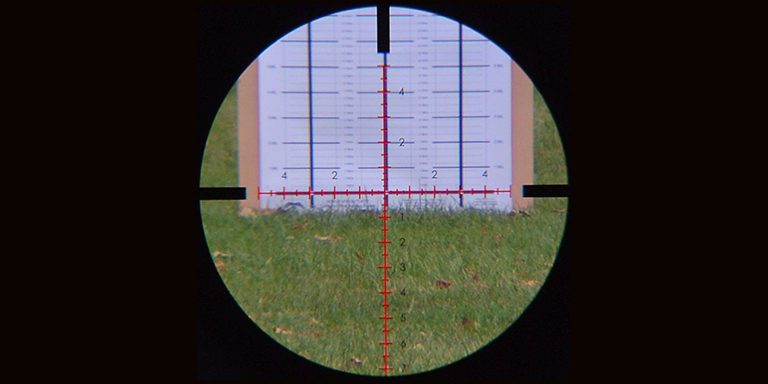Precision shooting is as much about understanding the mechanics of your firearm as it is about practice. For new shooters and hunting enthusiasts, terms like MOA and MIL can seem confusing at first. But learning the difference and how to use them correctly is essential for improving accuracy, making longer-range shots, and getting the most out of your optic setup.
This guide will help you understand what is MOA, the differences between MOA vs MIL, a MOA size guide, and practical advice on selecting between 3 MOA vs 6 MOA reticle options. Whether you’re heading to the range, preparing for hunting season, or just interested in precision shooting, this guide will give you a solid foundation.
What Is MOA?
MOA, or Minute of Angle, is a unit of measurement used in shooting to describe angular accuracy. In simple terms, one MOA equals 1/60th of a degree. At 100 yards, 1 MOA corresponds to approximately 1.047 inches, which is often rounded to 1 inch for easier calculations.
Understanding what is MOA is crucial because it allows shooters to adjust their scope precisely. When you dial in 1 MOA on your scope, you are moving the point of impact roughly 1 inch at 100 yards. At 200 yards, the same 1 MOA adjustment moves the point of impact 2 inches, and so on.
This linear relationship makes MOA an intuitive tool for shooters who need predictable, repeatable adjustments over varying distances.
MIL Explained
MIL, short for milliradian, is another angular measurement used in precision shooting. Unlike MOA, MIL is based on a metric system. One MIL equals 1/1000th of the distance to the target. At 100 meters, 1 MIL moves the point of impact by 10 centimeters; at 100 yards, it moves roughly 3.6 inches.
MIL is widely used in military and tactical shooting because it integrates well with metric distances and allows for precise range estimation and holdover calculations. Understanding MIL is important for shooters who might need to switch between MOA vs MIL or work with scopes that use MIL adjustments.
MOA vs MIL: Understanding the Difference
The MOA vs MIL debate often confuses beginners, but the differences are straightforward once you understand the units.
- MOA is slightly smaller than MIL: 1 MIL equals approximately 3.438 MOA.
- Adjustment increments: MOA scopes typically adjust in 1/4 or 1/8 MOA per click, while MIL scopes usually adjust in 0.1 MIL increments.
- Ease of calculation: MOA is simpler to calculate in yards and inches, while MIL is easier for metric calculations and more advanced range estimation.
When deciding between mil vs moa explained, consider your shooting environment and the type of targets. MOA is generally favored for hunting and recreational shooting in the United States, while MIL is more common in tactical, competitive, and military settings.
MOA Size Guide
For shooters looking to understand the impact of MOA at different distances, a MOA size guide is invaluable. Here’s a simplified breakdown:
- 1 MOA at 100 yards: ~1 inch
- 1 MOA at 200 yards: ~2 inches
- 1 MOA at 300 yards: ~3 inches
- 2 MOA at 100 yards: ~2 inches
- 3 MOA at 100 yards: ~3 inches
This scale helps shooters visualize how scope adjustments translate to real-world point-of-impact changes. Whether you’re zeroing a rifle or engaging targets at varying distances, knowing your MOA size helps make precise corrections without guesswork.
Choosing Between 3 MOA vs 6 MOA Reticle
For red dot and reflex sights, the reticle size affects both speed and precision. Two common options are 3 MOA vs 6 MOA reticle:
- 3 MOA reticle: Offers finer precision, ideal for longer-range shots or smaller targets. It’s slightly harder to see at a glance but allows for pinpoint accuracy.
- 6 MOA reticle: Larger and more visible, making it easier to acquire targets quickly at close ranges. Great for tactical or home defense setups where speed is more important than extreme precision.
Choosing the right reticle depends on your shooting style, typical engagement distances, and personal preference. Many shooters carry multiple optics to balance speed and precision in different situations.
Practical Application of MOA and MIL
Understanding the theory behind MOA and MIL is only half the battle. The other half is applying it effectively on the range or in the field. Here are some practical tips:
Range Estimation
Using MIL or MOA, you can calculate target distance if you know the size of the target. For example, spotting a deer at 200 yards using the reticle, a shooter can adjust their scope to compensate for bullet drop without guessing.
Zeroing Your Scope
Zeroing involves aligning your scope so that the point of aim matches the point of impact at a specific distance. Using MOA or MIL adjustments allows you to make precise corrections. For example, if your shots hit 2 inches high at 100 yards, you can dial down 2 MOA or the equivalent MIL to correct your zero.
Holdover and Windage
In addition to vertical adjustments, MOA and MIL help with holdover and windage. Understanding your unit of measure allows for consistent compensation when shooting in windy conditions or at longer ranges.
MOA vs MIL in Hunting and Outdoor Shooting
For hunting enthusiasts and outdoor shooters, understanding MOA vs MIL is essential for consistent results. Long-range shots require precise adjustments for both elevation and windage, and even small errors can mean a missed target.
- For most hunting rifles in the US, MOA is standard and intuitive.
- For tactical or international shooting competitions, MIL may be preferred because it simplifies calculations in meters.
Being proficient in both systems allows shooters to adapt to different optics, ranges, and environmental conditions, making them versatile and prepared for any scenario.
Common Mistakes Beginners Make
Many new shooters struggle with what is MOA and mil vs moa explained because they try to memorize numbers without practical application. Common mistakes include:
- Confusing MOA and MIL: Always know which adjustment your scope uses.
- Not accounting for distance: MOA adjustments change linearly with distance, so don’t assume 1 MOA is always 1 inch.
- Ignoring bullet trajectory: MOA or MIL adjustments are only part of the solution; bullet drop and velocity also matter.
- Choosing the wrong reticle size: A 6 MOA reticle may be too large for small targets at long distances, while a 3 MOA reticle may slow down target acquisition at close range.
Avoiding these mistakes comes with practice and understanding the fundamentals of precision shooting.
Tools and Gear for Learning MOA and MIL
For beginners who want to practice precision shooting, having the right tools is key. Some essentials include:
- A rifle scope with adjustable MOA or MIL turrets
- A rangefinder for accurate distance measurement
- Targets with known dimensions for MOA size guide practice
- Spotting scopes to observe impacts
- Notebooks to record adjustments and results
Building your precision shooting toolkit helps you track your progress and make accurate, repeatable shots in any condition.
Summary: Mastering Precision Shooting
Learning what is MOA, understanding MOA vs MIL, and practicing adjustments with the right reticle size and tools is critical for anyone serious about precision shooting. From knowing 3 MOA vs 6 MOA reticle differences to using a MOA size guide for practical adjustments, these concepts form the foundation of consistent accuracy.
Whether you’re shooting for sport, hunting, or competitive applications, mastering these concepts allows you to engage targets confidently at any distance. The more you practice, the more intuitive these adjustments become, and the more precise your shooting will be.
By combining theoretical knowledge with practical experience, you can become proficient in both MOA and MIL systems, giving you versatility and skill in every shooting scenario. With the right optics, tools, and practice routine, precision shooting becomes both rewarding and reliable, letting you enjoy the sport safely and effectively.
Read More From Techbullion



































